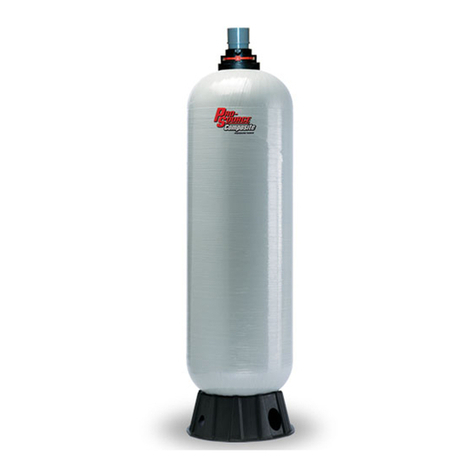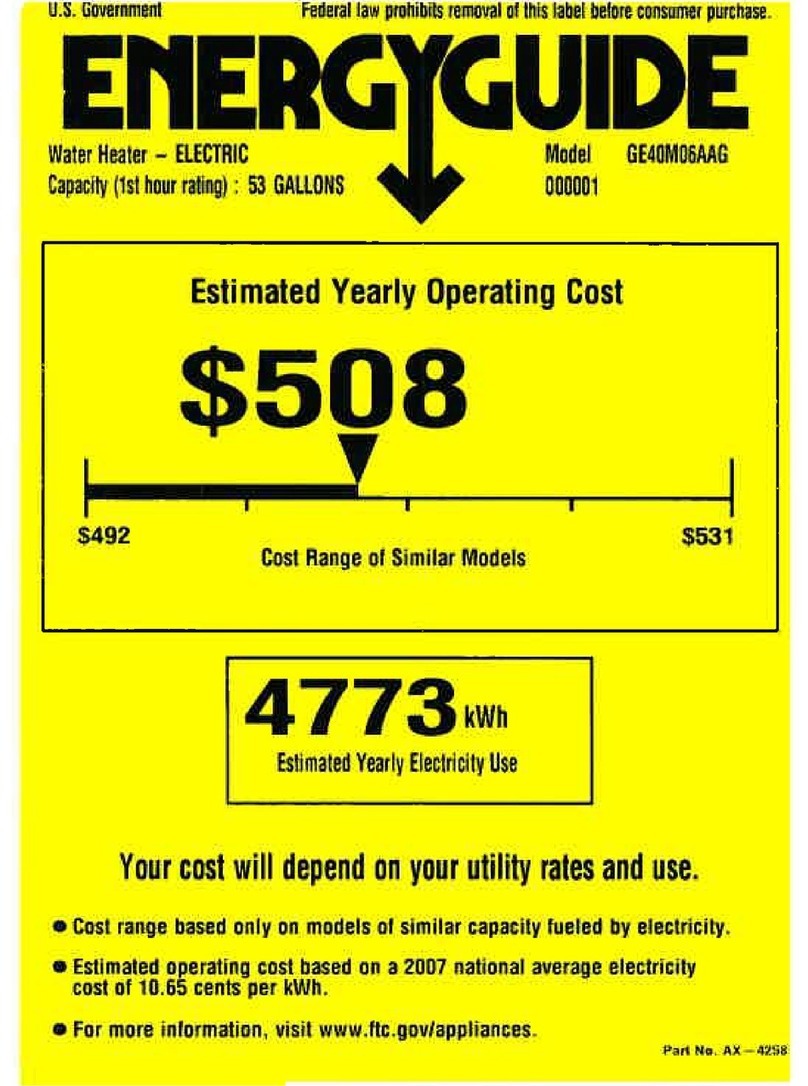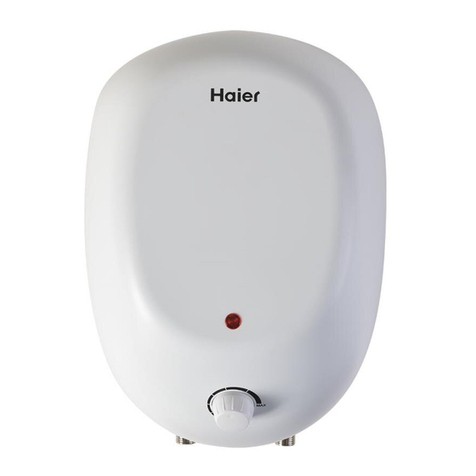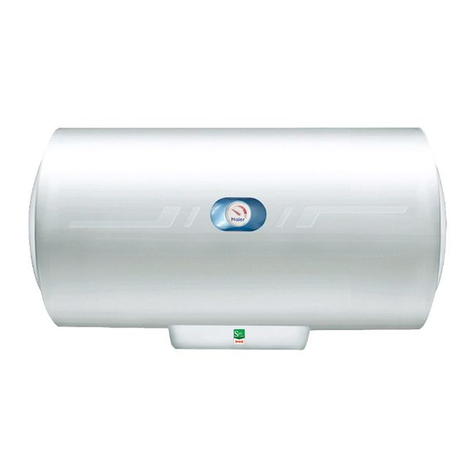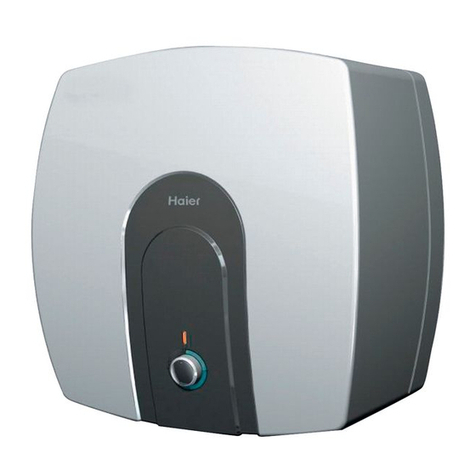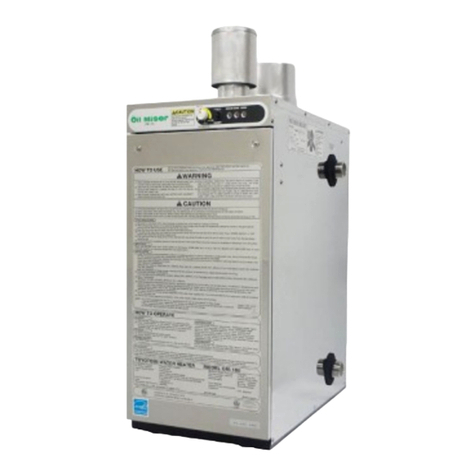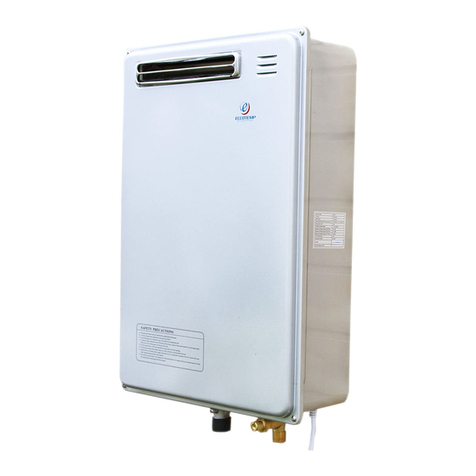3.3 IMPORTANT INSTALLATION POINTS
3.3.1 This unvented water heater MUST be tted with the Pressure Relief
Valve supplied. FAILURE TO PROVIDE ADEQUATE PRESSURE
RELIEF WILL INVALIDATE ANY GUARANTEE AND LEAD TO A
DANGEROUS INSTALLATION.
3.3.2 Expansion can take place within the cold water supply PROVIDED
THAT BOTH :
(a) Backow in the main is not prevented by any stop valve with loose
jumper, check valve, pressure reducing valve or similar AND
(b) Hot water expansion does not enter a branch to a cold water outlet
(see Figure 02, page 6 for expansion pipe lengths).
N.b. Both the above conditions must be met. Additionally expansion
within the cold water supply will not be possible if the static supply
pressure exceeds 0.41 MPa (4.1bar).
3.3.3 If any of the conditions in 3.3.2 cannot be met, expansion must be
accommodated using an Expansion Vessel. To ensure all expansion
takes place in the vessel, a check valve must also be tted together
with the Pressure Relief Valve supplied (see Figure 03, page 6).
3.3.4 If the static supply pressure exceeds 0.41 MPa (4.1 bar), a Pressure
Reducing Valve must be tted to the cold main supply. If a Pressure
Reducing Valve is used, an Expansion Vessel must also be used (see
Figure 04, page 6).
3.3.5 The installation must be carried out in accordance with the relevant
requirements of:
• The appropriate Building Regulations either The Building
Regulations, The Building Regulations (Scotland) or Building
Regulations (Northern Ireland).
• The Water Fittings Regulations or Water Byelaws in Scotland.
WARNING: IF WATER FLOWS FROM THE PRESSURE RELIEF VALVE,
THE ELECTRICITY SUPPLY MUST BE SWITCHED OFF IMMEDIATELY.
CONTACT A COMPETENT INSTALLER FOR UNVENTED WATER HEATERS
TO CHECK THE SYSTEM.




